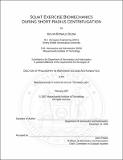| dc.contributor.advisor | Laurence R. Young. | en_US |
| dc.contributor.author | Duda, Kevin R., 1979- | en_US |
| dc.contributor.other | Massachusetts Institute of Technology. Dept. of Aeronautics and Astronautics. | en_US |
| dc.date.accessioned | 2007-08-29T19:06:09Z | |
| dc.date.available | 2007-08-29T19:06:09Z | |
| dc.date.copyright | 2007 | en_US |
| dc.date.issued | 2007 | en_US |
| dc.identifier.uri | http://hdl.handle.net/1721.1/38525 | |
| dc.description | Thesis (Ph. D.)--Massachusetts Institute of Technology, Dept. of Aeronautics and Astronautics, 2007. | en_US |
| dc.description | This electronic version was submitted by the student author. The certified thesis is available in the Institute Archives and Special Collections. | en_US |
| dc.description | Vita. | en_US |
| dc.description | Includes bibliographical references (p. 178-187). | en_US |
| dc.description.abstract | Artificial gravity (AG) created by short-radius centrifugation is a promising countermeasure to the physiological de-conditioning that results from long-duration spaceflight. However, as on Earth, gravity alone does not ensure fitness. We will need to supplement passive exposure to AG with physical exercise to achieve a comprehensive countermeasure. Before AG exercise can be deemed safe and effective, we must understand how Coriolis accelerations and a gravity gradient affect our biomechanics and how centrifuge-based exercises differ from Earth-upright ones. Two experiments were designed to investigate the squat biomechanics while upright in the laboratory and while lying supine on a horizontal, clockwise-rotating short-radius centrifuge at speeds up to 30 revolutions per minute. Constant force springs provided additional resistive force up to 25% of body weight. Dependent measure included the three-dimensional position of the left and right knee, left and right foot reaction forces, and muscle activity. We investigated the Coriolis-induced mediolateral knee perturbations and the sensory-motor after-effects from a multiple repetition protocol. The upright and centrifuge biomechanics were compared for similarities and differences between them. In addition, a two-dimensional kinematic model was developed to predict foot reaction forces, Coriolis accelerations, and joint torques. | en_US |
| dc.description.abstract | (cont.) Our results show that mediolateral knee travel during the AG squats was 1.0 to 2.0 centimeters greater than Earth-upright squats. Increasing the rotation rate or adding resistive force did not affect the results. The peak foot forces increased with rotation rate, but rarely exceeded 200% body weight. The ratio of left-to-right foot force during centrifugation was non-constant and approximately sinusoidal, suggesting a postural correction for the Coriolis accelerations. There was a qualitative difference in the foot force vs. knee angle profile between upright and centrifuge-supine because of the centripetal acceleration. Muscle activity, however, was qualitatively similar between the conditions. The kinematic model was used to evaluate the exercise safety and extend the results to larger-radius centrifuges. We conclude that centrifugation provides a unique and challenging environment for exercise and that a brief artificial gravity squat can be carried out safely. The results are extended to cycle ergometry, when possible, and recommendations are made for future AG squat protocols. Supported by NASA Grant NNJ04HD64G and the MIT-Italy Program Progetto Roberto Rocca. | en_US |
| dc.description.statementofresponsibility | by Kevin Ronald Duda. | en_US |
| dc.format.extent | 409 p. | en_US |
| dc.language.iso | eng | en_US |
| dc.publisher | Massachusetts Institute of Technology | en_US |
| dc.rights | M.I.T. theses are protected by copyright. They may be viewed from this source for any purpose, but reproduction or distribution in any format is prohibited without written permission. See provided URL for inquiries about permission. | en_US |
| dc.rights.uri | http://dspace.mit.edu/handle/1721.1/7582 | |
| dc.subject | Aeronautics and Astronautics. | en_US |
| dc.title | Squat exercise biomechanics during short-radius centrifugation | en_US |
| dc.type | Thesis | en_US |
| dc.description.degree | Ph.D. | en_US |
| dc.contributor.department | Massachusetts Institute of Technology. Department of Aeronautics and Astronautics | |
| dc.identifier.oclc | 162616649 | en_US |
